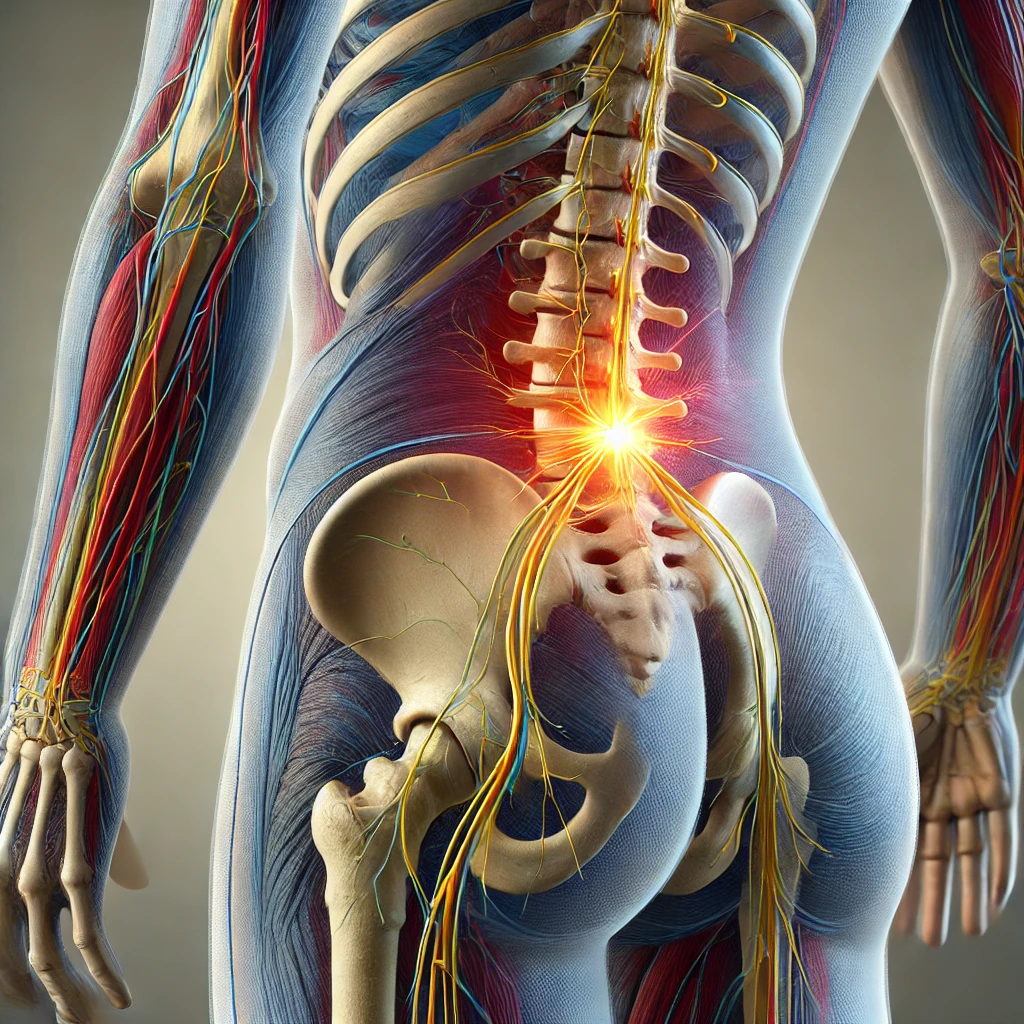Understanding Sciatica
What is Sciatica? Sciatica occurs when the sciatic nerve is compressed, causing pain that radiates down the back or side of the leg. This condition is often a result of nerve root compression in the spine or inflammation in the sciatic nerve itself. Common symptoms include low back pain, numbness or tingling down the leg, and weakness in the affected areas.
The sciatic nerve originates in the lower back, from the spinal nerves L4 to S3. It travels through the pelvis and down to the knee, where it branches into the tibial and peroneal nerves. The tibial nerve runs through the back of the lower leg, while the peroneal nerve travels along the side. This pathway explains why sciatica can cause symptoms down the leg.
Causes of Sciatica
- Lumbar disc issues (degeneration or herniation): This reduces the cushioning between spinal vertebrae, leading to nerve compression and pain.
- Spinal stenosis: Narrowing of the spinal canal can compress nerves.
- Spinal vertebrae fracture: Misalignment of the spine from a fracture can impact nerves.
- Pregnancy: Increased pressure and hip realignment during pregnancy can cause sciatic pain.
- Tight muscles (Piriformis Syndrome): Muscles surrounding the sciatic nerve can press on it when tight, often due to prolonged sitting or driving.
Piriformis Syndrome & Pseudo-Sciatica The sciatic nerve can also be compressed by tight muscles surrounding it, leading to symptoms similar to sciatica but not caused by spinal nerve root compression or inflammation. Dr. Janet Travell identified trigger points in the piriformis and gluteus minimus muscles that can mimic sciatic pain.
- Piriformis Syndrome: The piriformis muscle, located just above the sciatic nerve, can press on the nerve when tight or inflamed, causing pain, tingling, and numbness down the back of the leg. This condition is more of a muscle issue than a nerve issue.
- Pseudo-Sciatica: The gluteus minimus muscle, located on the outer hip, can develop trigger points that refer pain down the side of the leg, mimicking sciatica.
How Acupuncture Can Help Sciatica: Acupuncture can effectively treat sciatica by relaxing tight muscles, improving blood circulation, regulating the nervous system, and releasing neurotransmitters to reduce pain. Studies have shown that acupuncture can relieve sciatica symptoms more effectively than NSAIDs and muscle relaxers, offering a safe, non-surgical treatment option. Acupuncture can also enhance the effects of medications, potentially reducing the dosage needed and minimizing side effects.
Exercises for Sciatica
- Swimming
- Gluteal stretching
- Plank and side plank
- Clamshell exercises
- Hip extension exercises
- Resisted hip abduction
- Leg and core strengthening
How Many Treatments Are Needed? For chronic pain, it may take 2 or 3 sessions to notice significant relief. While I aim to create an initial change during your first visit, multiple treatments are often necessary to achieve lasting results.
Visit Doreen Hill Acupuncture for more information or to book a session.
Click the link to the online calendar https://doreenhillacupuncture.as.me/
